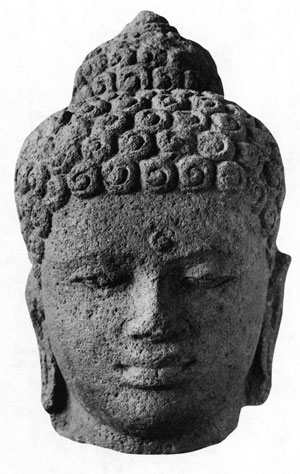 This vipassana practice is based on the Mahasatipatthana Sutta, the scripture that deals with the four foundations of mindfulness. We started with the first domain of mindfulness: paying attention to body sensations. As a way of beginning, we have people bring their attention to the breath and to walking. But really, if you think about it, is there such a thing as “the breath?” There are vibrations and pulsings and pullings; there are all kinds of sensations that make up this thing called “the breath,” but there isn’t any one thing that makes up “the breath.” Neither is there any such thing in walking as “lifting” or “moving” or “placing” our feet. Those are names that we give to a very complex variety of body sensations.
This vipassana practice is based on the Mahasatipatthana Sutta, the scripture that deals with the four foundations of mindfulness. We started with the first domain of mindfulness: paying attention to body sensations. As a way of beginning, we have people bring their attention to the breath and to walking. But really, if you think about it, is there such a thing as “the breath?” There are vibrations and pulsings and pullings; there are all kinds of sensations that make up this thing called “the breath,” but there isn’t any one thing that makes up “the breath.” Neither is there any such thing in walking as “lifting” or “moving” or “placing” our feet. Those are names that we give to a very complex variety of body sensations.
And even when we begin to practice for the very first time, when we close our eyes for the first five minutes, there is such a lot of dharma to learn. One sits down, closes one’s eyes, and sees that there is a lot going on! Isn’t it true that there are twitchings and pulsings that you weren’t aware of? If you pay attention for just five minutes, you know some very fundamental dharma: things change, nothing stays comfortable, sensations come and go quite impersonally, according to conditions, but not because of anything that you do or think you do. Changes come and go quite by themselves. In the first five minutes of paying attention, you learn that pleasant sensations lead to the desire that these sensations will stay and that unpleasant sensations lead to the hope that they will go away. And both the attraction and the aversion amount to tension in the mind. Both are uncomfortable. So in the first five minutes, you get a big lesson about suffering: wanting things to be other than what they are. Such a tremendous amount of truth to be learned from just closing your eyes and paying attention to bodily sensations.
So then why, if all the myriad body sensations are so important, why on earth spend so much time bringing the attention back to the breath? Especially when people come to me and say, “I have a lot of trouble staying with the breath.” If I now say that the breath is merely one of many different bodily sensations, why does our instruction concentrate so much attention on the breath?

Why the Breath Is a Good Object of Buddhist Meditation
We’re not doing this to become good breathers or good walkers, or even good meditators. We’re doing this to become clear about what is true. So why talk about the breath so much? Breath is a really good point of focus to begin with, even to end with, but certainly to begin with. It’s always there. We are all always breathing. If you haven’t got any problems with your breathing apparatus, it’s a relatively neutral activity to pay attention to. It’s uncomplicated, rather plain. For that reason, as we begin to focus on it and pay attention to it, it allows the mind to become somewhat concentrated and calm as well. It’s changing all the time, but it’s rather steady in its changing.
So it’s a good tool for focusing and also for calming the attention. It is the same with walking. You don’t have problems with walking. It’s not a conflictual activity. It’s repetitive, uncomplicated, fairly neutral. So it has the possibility of calming; and both walking and breathing have the possibility not only of calming and focusing the mind but also of allowing insight to arise. Some people practice throughout their entire lives just by paying attention to breathing. Everything that is true about anything is true about breath: it’s impermanent; it arises and it passes away. Yet if you didn’t breathe, you would become uncomfortable; so then you would take in a big inhalation and feel comfortable again. But if you hold onto the breath, it’s no longer comfortable, so you have to breathe out again. All the time shifting, shifting. Uncomfortableness is continually arising. We see that everything keeps changing. Sometimes people worry a lot. I notice that in interviews, people come to me and feel that they are not in touch with their breath, or cannot find their breath, or work with it. Breath takes care of itself. Arising and passing away quite impersonally, with no one breathing. The same is true of walking. This understanding comes through our attention.
Thank you for subscribing to Tricycle! As a nonprofit, we depend on readers like you to keep Buddhist teachings and practices widely available.